Army Artist Coverage of the Eightieth Anniversary of D-Day
By Sarah G. Forgey
Article published on: August 1, 2024 in the Army History Fall 2024 issue
Read Time: < 3 mins
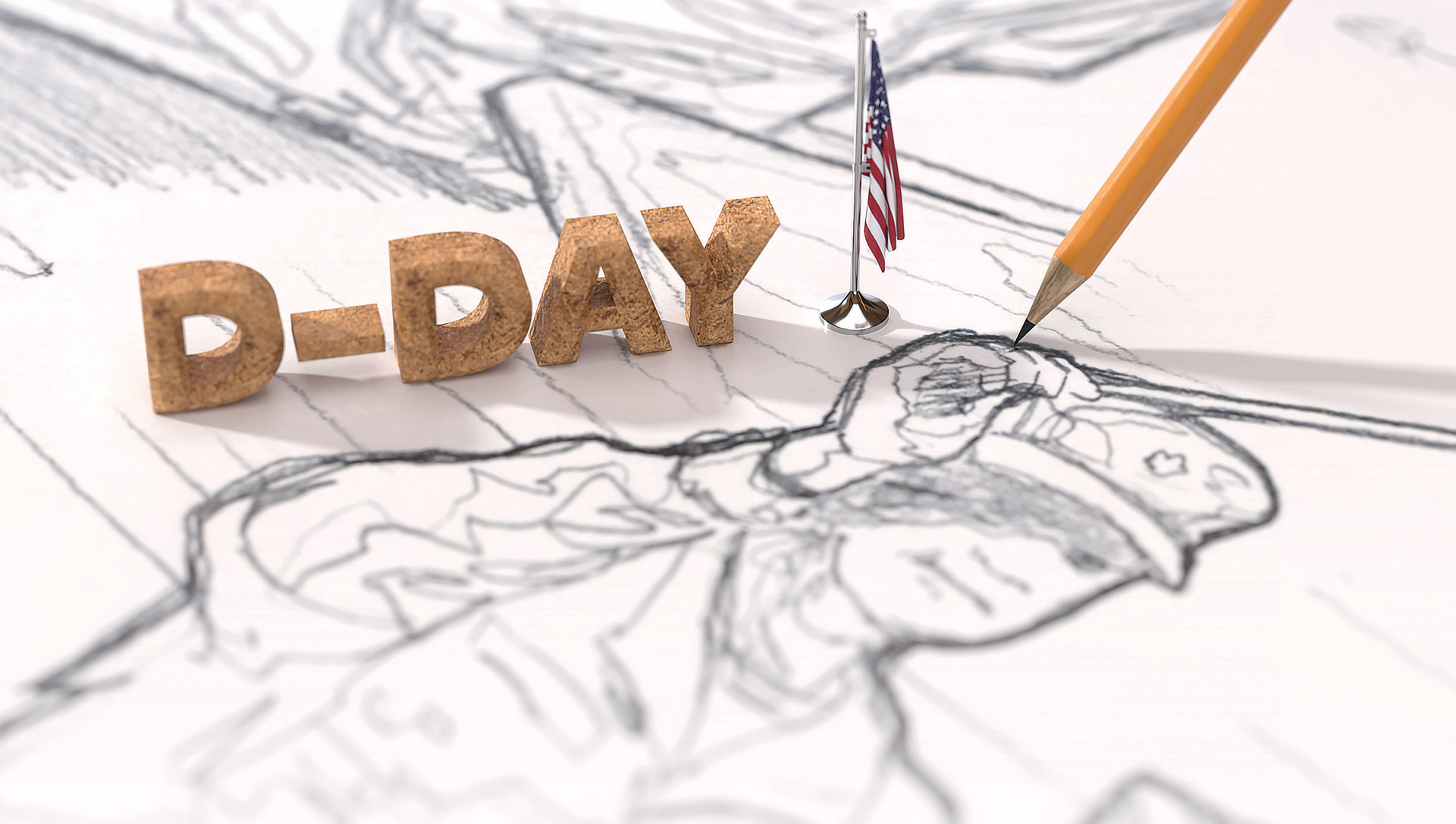
Beginning in World War I, the Army has assigned official artists to document its activities through the artistic medium of their choice. Although the program has looked different at various points in history, the Army established the current Artist in Residence position in 1992. The Army Museum Enterprise continues to host the program.
Since 2001, Army artists largely have documented the Global War on Terrorism. With the withdrawal from Afghanistan in 2021, the artist program needed to develop a new direction. As the incoming artist in 2023, Sfc. Jason M. Spencer became primarily responsible for outlining a future vision for the program in alignment with TRADOC’s enduring priorities. With previous artists heavily focused on troops deployed in the Middle East for twenty years, the Army Art collection lacked comprehensive coverage of daily soldier life outside of an operational environment. It also needed documentation of training efforts and content on the important role that Army families play in supporting soldiers.
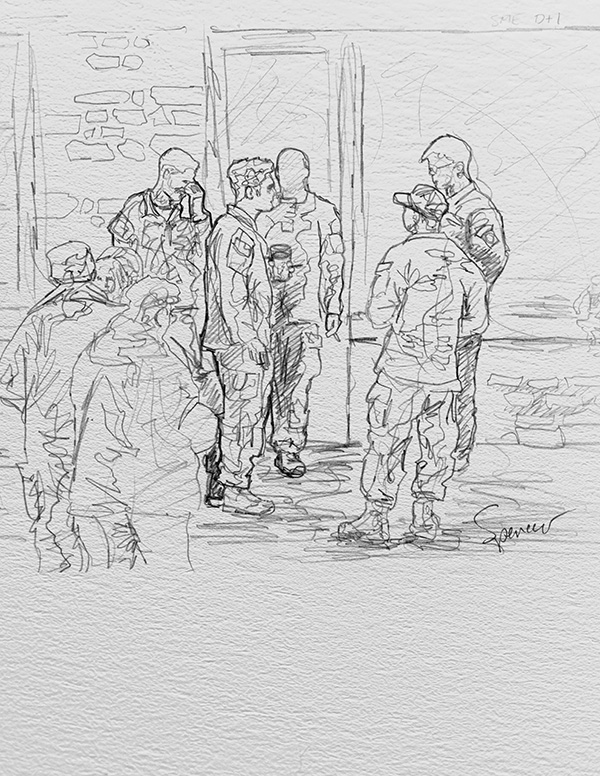
The Stop Bar
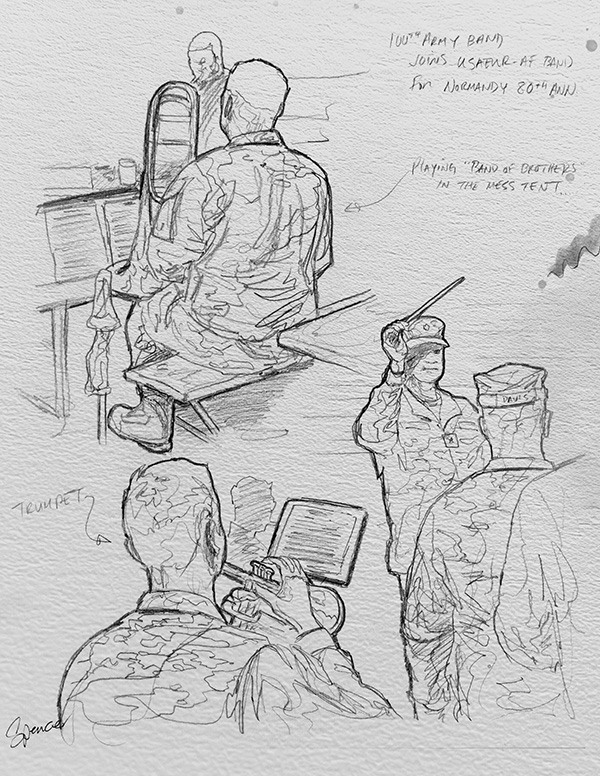
Chow Hall
With these priorities in mind and with further intent to include groups of soldiers that traditionally have been underrepresented in Army artwork, Sergeant Spencer traveled to Normandy in June 2024 in support of the Army’s commemoration of the eightieth anniversary of the D-Day landings. In addition to documenting ceremonial events, he intended to record the daily lives of soldiers from the units participating in the anniversary and their interactions with Normandy invasion veterans and their families, local residents, and foreign soldiers. Sergeant Spencer went to Normandy with the 82d Airborne Division and was quartered in Carentan with the 101st Airborne Division. These travel arrangements offered numerous spontaneous opportunities to document daily events as they occurred. His field sketches include soldiers sleeping while waiting for a ride, checking in with loved ones on their phones, and even lining up for a opportunity to use a latrine. At the living quarters in Carentan, he walked into the dining tent one day to find various Army bands practicing for the upcoming ceremonies, playing the Band of Brothers theme.
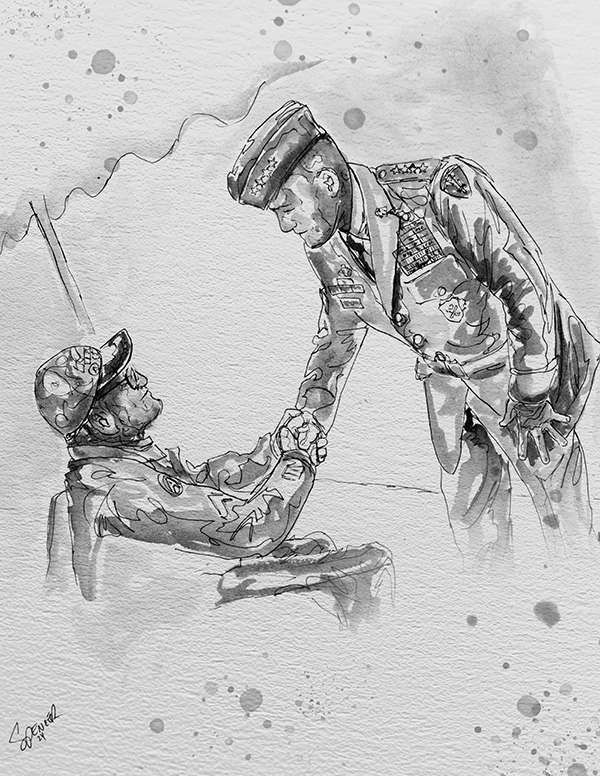
Cabbage Patch

No Movement/Movement
Although Army artists always carry a camera to take reference photos during fast-paced events that they can use later to develop artwork in the studio, many also carry a sketchbook in case they have slower moments to draw. During the D-Day mission, creating artwork in the field was particularly important to Sergeant Spencer. It would be a link to the Army artists who documented the Normandy invasion during World War II. He could distinguish the difference between his mission and that of public affairs, which was documenting the anniversary as well. While in France, he completed seventeen graphite sketches and watercolors, which he used as examples of the artist program’s capabilities when interacting with major commands. They are finished artworks on their own, but some will also serve as reference material for oil paintings or watercolors produced later in the studio. Field sketches like these are important to future curators and historians as primary source material. They capture the details of a scene and the artist’s emotional impression of an event, and can include notes about the event or humorous observations by the artist that make a scene feel more relatable to the viewer.
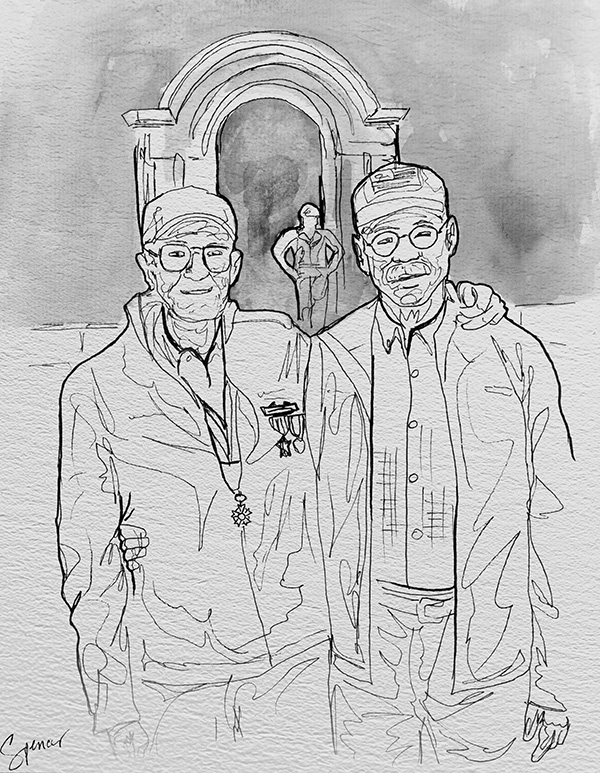
Father and Son
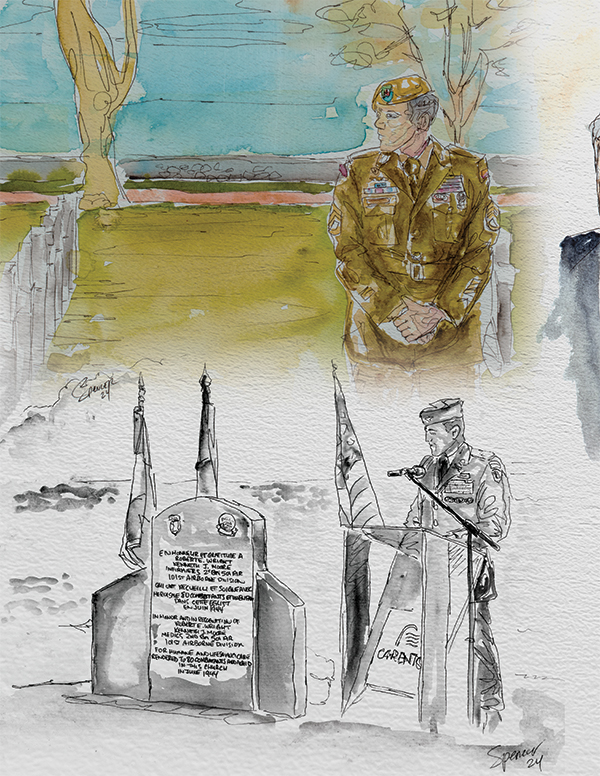
Ever Vigilant/ Medic at Church Memorial
Since his return from Normandy, Sergeant Spencer also has completed five larger watercolors with Normandy subjects and has six oil paintings in progress in the studio. One of the in-progress pieces has the working title of Chiefs and Chaplains. It depicts a ceremony at the Charles Shay Memorial on Omaha Beach, which is dedicated to Native American medic Charles Norman Shay and other Native Americans who served on D-Day. Of many commemorations scheduled during the D-Day annivesary, documenting this moving ceremony was particularly imporant to Sergeant Spencer, as there is little representation of Native American soldiers in the Army Art collection.

The Greats
In addition to documenting the eightieth anniversary of the D-Day landings, Sergeant Spencer also has been working recently on a series of artwork documenting Army famillies and a series on training. When completed, his work will be accesioned into the Army Art collection and preserved at the Army Museum Support Center at Fort Belvoir, Virginia.
Author
Sarah G. Forgey is the chief art curator for the Army Museum Enterprise.